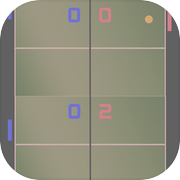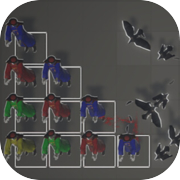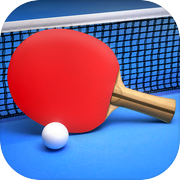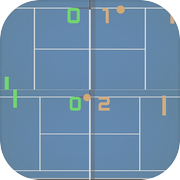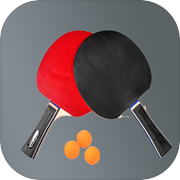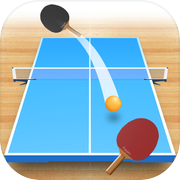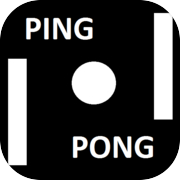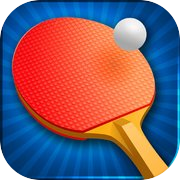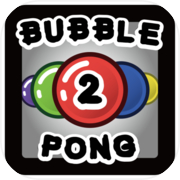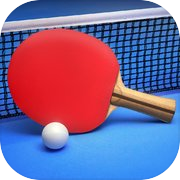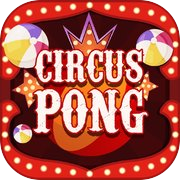String Pong
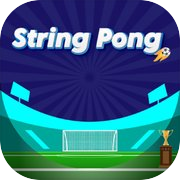
String Pong is a unique and innovative game that combines elements from both ping pong and golf, creating a challenging and enjoyable experience for players. The game is played on a specially designed course that resembles a traditional mini-golf course, but instead of putting the ball with a club, players use a stringed paddle to hit the ball.
Here's a description of how String Pong works:
1. Course Setup: The String Pong course consists of a series of holes or challenges, similar to those found in mini-golf. Each hole has its own distinct design and obstacles, including ramps, tunnels, loops, and hazards. The holes are arranged in a sequence, and players need to complete them one by one.
2. Equipment: Players are equipped with a specialized stringed paddle. The paddle features a long handle with a sturdy string attached to the end, forming a large loop. The other end of the string is connected to a small, lightweight ball.
3. Objective: The objective of String Pong is to use the stringed paddle to hit the ball into the designated hole with as few strokes as possible, just like in golf. Players must navigate the course's obstacles strategically to reach the target.
4. Gameplay: To start the game, a player positions the ball at the starting point of the first hole. They then use the stringed paddle to swing and hit the ball. The unique physics of the game make it challenging as players must control the ball's trajectory and speed with the flexible string.
5. Obstacles and Challenges: Each hole presents its own set of obstacles, which might require players to hit the ball through narrow tunnels, loop it around barriers, or navigate ramps to reach the hole. Some holes may have hazards, such as water features or sand traps, where players need to be careful to avoid extra strokes.
6. Scoring: Just like golf, the objective is to complete each hole with as few strokes as possible. The player who completes the entire course with the lowest total number of strokes is the winner.
7. Skill and Strategy: String Pong requires a combination of skill, precision, and strategy. Players need to assess the layout of each hole, choose the right amount of force for their swings, and adapt their tactics based on the string's flexibility and the ball's response.
8. Social and Competitive Aspect: String Pong can be played individually to improve skills or as a social activity with friends and family. Additionally, it can be organized as a competitive sport, where players compete against each other in tournaments and events.
Overall, String Pong offers a fun and challenging experience that combines the excitement of ping pong and the strategic thinking of golf. It is suitable for players of all ages and skill levels, making it a fantastic choice for recreational entertainment and competitive play alike.
Here's a description of how String Pong works:
1. Course Setup: The String Pong course consists of a series of holes or challenges, similar to those found in mini-golf. Each hole has its own distinct design and obstacles, including ramps, tunnels, loops, and hazards. The holes are arranged in a sequence, and players need to complete them one by one.
2. Equipment: Players are equipped with a specialized stringed paddle. The paddle features a long handle with a sturdy string attached to the end, forming a large loop. The other end of the string is connected to a small, lightweight ball.
3. Objective: The objective of String Pong is to use the stringed paddle to hit the ball into the designated hole with as few strokes as possible, just like in golf. Players must navigate the course's obstacles strategically to reach the target.
4. Gameplay: To start the game, a player positions the ball at the starting point of the first hole. They then use the stringed paddle to swing and hit the ball. The unique physics of the game make it challenging as players must control the ball's trajectory and speed with the flexible string.
5. Obstacles and Challenges: Each hole presents its own set of obstacles, which might require players to hit the ball through narrow tunnels, loop it around barriers, or navigate ramps to reach the hole. Some holes may have hazards, such as water features or sand traps, where players need to be careful to avoid extra strokes.
6. Scoring: Just like golf, the objective is to complete each hole with as few strokes as possible. The player who completes the entire course with the lowest total number of strokes is the winner.
7. Skill and Strategy: String Pong requires a combination of skill, precision, and strategy. Players need to assess the layout of each hole, choose the right amount of force for their swings, and adapt their tactics based on the string's flexibility and the ball's response.
8. Social and Competitive Aspect: String Pong can be played individually to improve skills or as a social activity with friends and family. Additionally, it can be organized as a competitive sport, where players compete against each other in tournaments and events.
Overall, String Pong offers a fun and challenging experience that combines the excitement of ping pong and the strategic thinking of golf. It is suitable for players of all ages and skill levels, making it a fantastic choice for recreational entertainment and competitive play alike.
Available on devices:
- IOS








